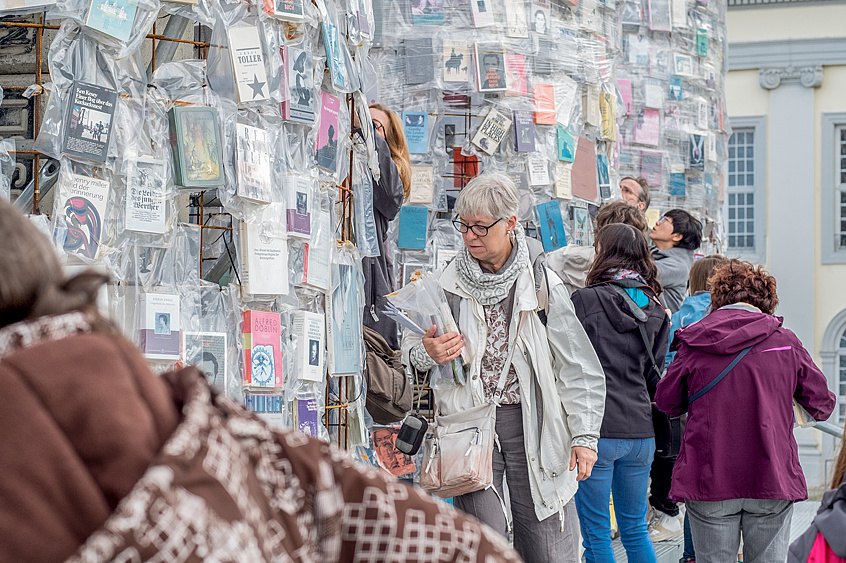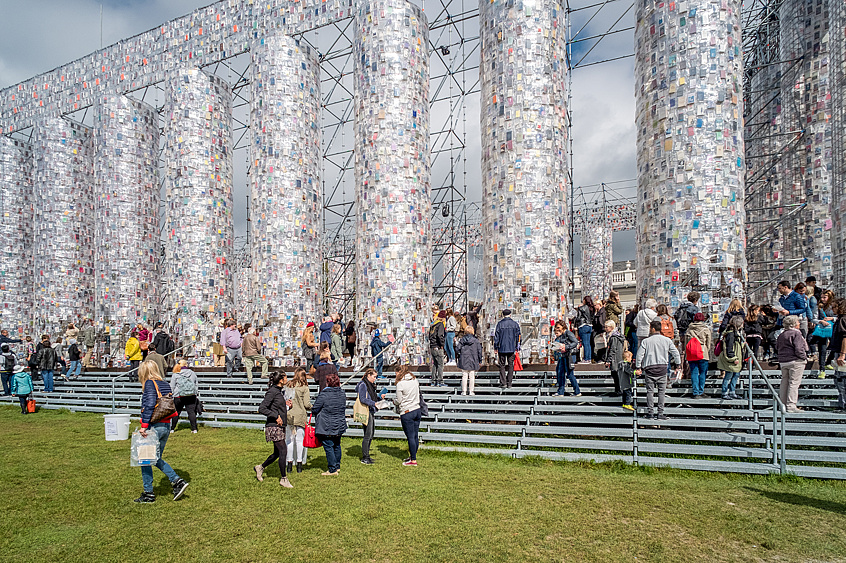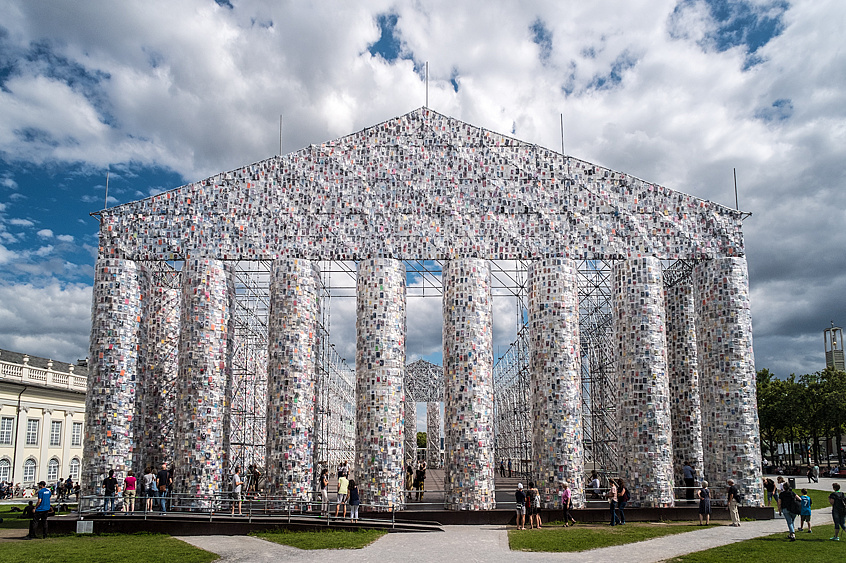Constructed in the late eighteenth century as a way to expand Kassel from the old medieval town toward the flourishing Huguenot settlement nearby, Friedrichsplatz has often been employed as an arena for the display of political and military power. The statue of Landgrave Friedrich II overlooks his prized museum. The Third Reich used the massive square for military parades, draping all the surrounding buildings in the red and black of the swastika flag. After World War II, Friedrichsplatz became a centerpiece of urban regeneration. It was cut in half by Frankfurter Strasse to accommodate the influx of cars—and the attendant dream of modernity—and the square’s main cultural site, the Fridericianum, hosted the first documenta in 1955, another powerful symbol of cultural restitution. Since then, Friedrichsplatz has developed into a heterochronous marketplace. The square itself sits empty most of the time, while the city’s cultural institutions on the north side, as well as the disappearing shops that fostered the local economy in recent decades on the south, observe the steadfast progression on the Obere Königsstrasse of the chain stores that shape the global marketplace today.
Marta Minujín’s The Parthenon of Books (1983/2017) stands tall on Friedrichsplatz, effectuating both the history and the displacement of documenta 14. Its columns, made up of banned books, echo the neoclassicism of the columns that support the Fridericianum and art histories within. While Walter De Maria’s quietly grand permanent installation on the square invites us to travel a kilometer underground, Monument to Victims of Violence (1974) by Vadim Sidur (1924–1986)—temporarily relocated from the other end of the square—enters into a conversation with the monument to one of Kassel’s rulers. Hiwa K’s When We Were Exhaling Images (2017) reminds us of a longer journey on the surface, one that thousands of people still make every day seeking refuge. Other new works itinerate out from the Fridericianum: Daniel Knorr’s vaporous Expiration Movement issues from the tower of the building (Zwehrenturm), and Banu Cennetoğlu’s BEINGSAFEISSCARY, replacing the signage bearing the museum’s name, marks the site’s history and comments on contemporary Kassel and Fortress Europe at large.





